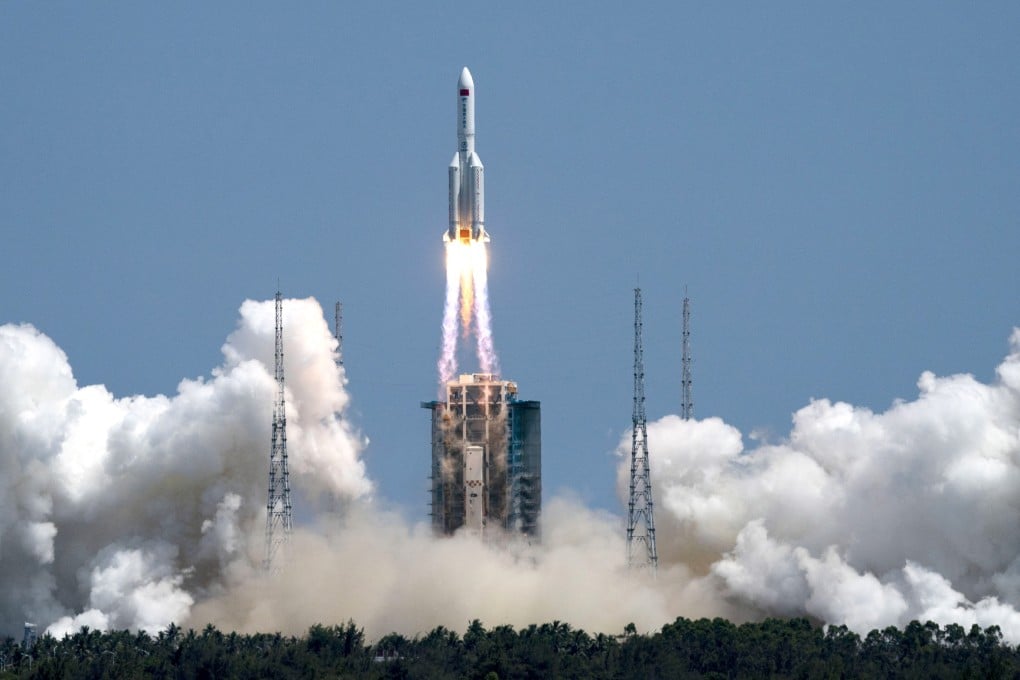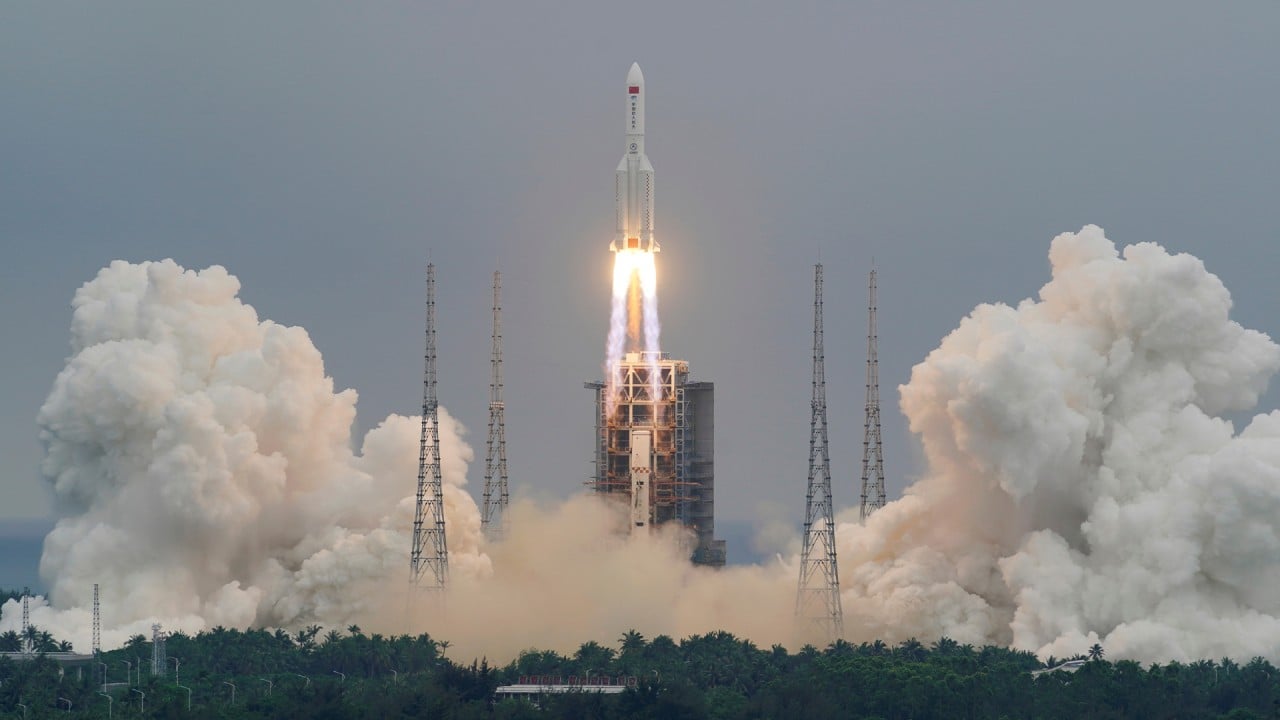Should we worry about space debris from Chinese rockets hitting Earth?
- The recent launch of the Long March 5 rocket prompts concern about whether it will hit a city when coming back to Earth
- Harvard astrophysicist Jonathan McDowell estimates the probability of a rocket hitting a person after it falls to Earth is just one in a few billion

What happens to Long March 5 debris falling to Earth?
The debris has a mass of about 20 tonnes, including a substage rocket, instrument module, payload support and other components, according to Chen Shiqiang, a researcher with the China Academy of Launch Vehicle Technology in Beijing in a paper published in Aerospace China journal in August.
The structural components – including the hydrogen and oxygen storage tank, the first-stage inter-box section and instrument modules – account for about 77 per cent of the total mass. The engine makes up 15 per cent and the rest is electrical equipment, according to Chen.
Most of the structural parts and shells for electrical equipment are made from aluminium alloy, which will disintegrate and burn fully in the atmosphere during re-entry.
Composite materials and high-temperature alloys with non-combustible characteristics might not be completely burned up in the atmosphere. Therefore, some fairings, adiabatic pipelines and other small parts of wreckage would land on the Earth’s surface, he said.
Is there any risk to humans?
The chance of humans getting hurt is infinitely close to zero, according to calculations by some space scientists.
